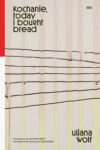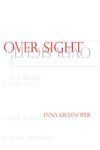
This essay was first made available last month, exclusively for our Patreon supporters. If you want to support Full Stop’s original literary criticism, please consider becoming a Patreon supporter.
Lately in the United States, a lot of poems published in journals and anthologies, and in collections by individual poets from independent and academic presses, present you with images that are loaded with narrative. Indeed, narration so pervades the field that it sometimes seems as if the attempt to exclude narrativity from a poem only admits it more loudly, and that poets are helpless to resist the zeitgeist. It’s all about storytelling these days. But the poems all tell the same story. The tale is an anecdote that takes place somewhere else outside the poem. It’s often a drug addiction or a crisis of conscience. Something personal. Or impersonal. The poet picks up on a common subject and gives it the MFA treatment, and you either go along with this or you don’t. But whatever the topic, the poem lays claim to large concerns. The poet builds a myth about something that we all supposedly share. And the personality of the fictional character in the poem reflects back onto the public persona of the writer. The glow of a performance washes over the poet. Instead of meeting Wordsworth’s “man speaking to men,” the reader overhears an isolated person, speaking to themselves. The One addressing the Many.
You could say that a lot of prestigious contemporary academic verse in the United States takes after the Deep Image poetry of the late twentieth century. You could also say that the trends in play have something to do with how creative writing programs use John Ashbery’s work as a model in workshops. The present vogue has a neutral abstract quality. It seems as if anyone and no one is talking to you. You get to be academic and experimental at the same time. Avantgardist, but vicariously. This new poetry has deep roots and wide offshoots. Its neutrality and abstractness facilitate this:
the new construction going up
is elegy, no
money down or interest through
The twilight of the medium
We’re heavily indebted to
interior scenes, now destroyed
It says so here
On the computer, you can watch
The seas
(Ben Lerner, “Doppler Elegies,” Mean Free Path)
We’re seeing a return to poetic diction in a late form. The declarative sentence, the statement, resists being read as prose. A fast distance from the spoken tongues is preferred. The reader finds out what things are like, not what they are. The figurative is amplified. The literal is muffled. Allegory is the mode. The fashion. The poem is sublime. It’s a vehicle that carries a message. Not an artwork unto itself, a thing that is its own message. In the crisis depicted in these ultramodern poems with their impeccable tone, obscurity and terror abound, but the poet leads you. The poet is a mage. A sage. A prophet. A monarch. A saint. Or the opposite.
Stefania Heim’s poems engage the reader’s attention in a way that the present current of poetic mythmaking does not. From her first book to her second, she concentrates more and more on the moment as it happens. Some readers are going to find this satisfying. I like it because the recurrence of the motif preserves something of the felicity of improvisation, the happy accident that escapes intent, thwarts egotism, and outwits use value. Heim’s poetry names objects and actions and people as they are, without likening them to anything else:
10:41 PM
At one a.m. she wakes
for day. She hears
the bells and tries to knowtheir message. We read
them for her like we would
in the fieldsif we were working.
One long now
and one short. Two shortand then three. Two long.
Everyone gather
around your various tables.In this place of concentrated
association, time is coded
for prescribed communaluse. Now eat. Now rest. And
when the sun has set walk
slowly up and down the roadsof winding houses. Walk
to where the lights
stop and the darkness is sudden.A dog across the hills
sounds close, another,
farther, calls more menacingly back.
Rereading this piece, it strikes me that a poet should have a sense of the generalness of experience, and should therefore cultivate anonymity, rather than uniqueness. If prosody can be said to entail poetics, then we might be excused for calling this piece Post-objectivist and Post-imagist – a poem that espouses the aesthetics of those groups of early twentieth-century poets, which were united by a set of loosely defined principles of artistic composition in words, according to which a poet was supposed to explore an area of experience that lay between ideas and things. These are not popular or notable influences in most contemporary poetry. It’s an unusual pleasure to recognize the tone of William Carlos Williams’ Spring and All in a poem published last year. More abstrusely, perhaps, the lines “We read / them for her like we would / in the fields // if we were working” stuck in my head for a long time, and I didn’t know why, until it dawned on me that I was hearing an echo, so to speak, of some lines by George Oppen – “we walked / To where it would have wet our feet / Had it been water” – the sort of submerged allusion, if you will, which is a common pleasure to a poetry reader, and a tool of the trade among poets, for whom lines of verse become associated with particles of experience that resurface unbidden from the unconscious to signal adoration, appreciation, preoccupation. But just as Heim’s poetry stands apart from the generalizing tendency that characterizes so much contemporary academic verse, it also distinguishes itself from the antiquarian approach to literary history. (Apropos of those ultramodern poems I described above, Heim notes in an essay that “an innovative surface does not make something politically, ethically, or even artistically radical”). Today there is something special about a muted allusion to the figure of George Oppen – “muted” because it occurs in the connotative and associative domain of prosody, arising with the suggestion of rhythm, rather than in the denotative and referential domain of quotation, delivered with the intention of style – a poet who did not publish for many years after his first collection appeared, a decorated combat veteran of the European Front, a Jew, a Communist, an expatriate who spent several years in Mexico, and the scion of a wealthy San Francisco family. Oppen possesses some of Walt Whitman’s insouciance about his own self-contradictory identity. Heim’s semiconscious allusion to him sets her apart from her contemporaries, and it also represents a development in her use of the motif.
Stefania Heim is a mother, a wife, and a professor. Her mother immigrated to the United States from Molise, Italy. She grew up in Queens at the end of Generation X, and the few comments she has made about her own life betray a particularly arid form of the numb disgust that’s understood to be typical of that demographic, along with a sharp admixture of academicism that makes for a heady cocktail: the intimate presence that’s been drained of personality, a telling blank. And this disregard for the socius – her refusal to pretend that she isn’t wearing a mask – paradoxically becomes yet another distinguishing feature, a thought among the halos, so to speak, as they bob up and down in the press of the media avenue, where writers traffic not in money but in attention, the symbolic capital of the twenty-first century. Generationally, in other words, Heim practices perforce a late style, since there is nothing else to do; and her antecedents tend to the clipped vocables of the frostbitten Modernist poets, foremost among them, it seems to me, H.D. and Williams; along with later, more expansive but still quite impersonal poets, like Bernadette Mayer and Elaine Equi; and then there are the ones who fascinate her, whom she likes to think about, such as Susan Howe and Muriel Rukeyser, the subjects of several of her scholarly articles. Her technique, what Ezra Pound would call the test of her sincerity, is saturated with the practices of the Black Mountain group, the Bolinas group, and the New York School, among others – an exploratory improvisation that takes into account new advances in music, painting and the hard sciences; an interpretation of the poetry of the past according to the assumption that, as Charles Olson phrased it (deliberately misquoting Shakespeare), “the present is prologue;” and a contrarian standpoint against the adherents of consensus reality. It’s unusual for a contemporary poet to carry these principles over into the new century, and there is something dogged and perverse about Heim’s focus, ever more intense, on the concrete data of everyday life.
Heim’s poems make statements about the world and the poet in it. Her work comes out of the descriptive tradition of art, along with all those artistic experiences where we get to become an imaginary person, a fictional character who’s more observant than we are, someone who directs her gaze outward toward the great exterior system of the universe, instead of looking within – this is the world of Empirical and Pragmatic philosophy; the craft of the aphorist, the diarist, the naturalist, and the traveler; and the fields of documentary filmmaking, portraiture, still life painting, and plein air landscape – such that certain themes arise over and over in her poems, motifs popping up in the lines, staying the same but also changing every time they appear, transformed by each new iteration. The poet reacts to what’s happening around her in the present moment as she writes. She stays with her consciousness as it unfolds in real time. She takes notes, and this technique lets her make happy accidents. She doesn’t come up with analogies for matters of the spirit, and she doesn’t evoke the unconscious. Instead she connects with those territories, by working with her motifs, as they surface while she’s writing.
To look out for what you accidentally write is to distract yourself on purpose from what you mean to write. An acute sensitivity to the distinction between privacy and publicity is thus a corollary of this sophisticated method. And so an opposition between the public and private spheres, across the facets of Heim’s work – in the subjects and themes of her poems, in the concepts of her theory, and in the topics of her criticism – comes as no surprise. You can even see it in her scattered autobiographical passages, for example a sketch of her Italian grandparents, where she describes “the precision and beauty of her needlework” and “his suitcase on return visits crammed with M&Ms, cartons of Marlboros, and pairs of Levi’s he would distribute.” When I look for a point of resolution or reckoning in Heim’s writing, I keep going back to her statement about being a teacher and a mother: “I don’t think what I want my students to see or understand about my motherhood is its content.” Heim’s remark bears on her own poetics, and on the topic generally, with urgency, depth and realness:
My sweaty, tired body holding my child’s sweaty, tired body – one arm asleep, back painfully pinched, seat creaking, dozens of adults between us and the exit […] The messy facts: the legitimate shame and confusion of my sweaty tired body are not unlike the messy facts, the shame and confusion of professional and financial insecurity. Especially when it is confessed within relationships predicated on some version of authority. One reason I believe this connection is sound is that I don’t think what I want my students to see or understand about my motherhood is its content.
The mystery of life, the wonder of creation, as the flesh of your flesh and the blood of your blood, asserts itself everywhere in Heim’s work, especially in Hour Book where she’s also dealing with the death of her grandmother, and where the hours of the day are not only quotidian but also sacral, the profane horae canonicae of a life on Earth. Prayers. And so I think the tense distinction between the public and the private in Heim’s work isn’t merely social; rather it’s a deep unease with the problem of amor fati in a universe that is not anthropocentric. Late-twentieth-century poetry of a radical bent in the United States (“radical” in the sense of an explicit treatment of roots, i.e., first principles) tends to dismantle the facets of experience and then reconstruct them in different shapes, in an attempt to conceive of them anew. Its central conceit is a tesseract. Heim’s work belongs to this current. She holds fast to the clarity and blur of spacetime in the imagination, and she describes one dimension in terms of another, à la the Theory of Relativity: “I have wanted to make time / into a room. Not contain, not tell, not give shape, not locate. I wanted to / enter. As though it were somewhere. I wanted to have a look around.” Heim has a great phrase about Muriel Rukeyser. She says Rukeyser writes an “experimental feminine poetics of war.” To me, Heim writes a theoretical feminine poetics of terror. Its mark appears everywhere in her writing. Her technique gives it form, a sign of her time and place.
This isn’t to say that theory, femininity, and terror aren’t strange bedfellows for this poet – both in the world of intellectual endeavor and in the realm of the real. She confronts the disarray of the everyday as she finds it, and lets her concepts spill out of their containers and bleed over into each other, without trying to set up a hard distinction between her poetics and her life, between writing and living. In an essay, Heim recalls riding the subway alone late at night, and freaking out, not because someone might rob or hurt her, but because the train might enter another dimension and leave this one behind. A peculiar feeling perhaps, but ordinary enough. And yet, aside from posting on social media to announce her books and events, she doesn’t cultivate a persona – a public image to set herself apart from others, as prescribed by the norms of the moment – presumably because that would involve expressing opinions, which doesn’t seem to interest her. Instead, she sometimes takes up positions on matters of public interest, which is a different sort of gesture; and she backs up her views with actions. Heim’s entanglement in a recent episode in American academic publishing illustrates her engagé stance, her compulsion to live out the implications of her writing.
In 2016, following allegations of sexual misconduct, the Massachusetts Institute of Technology conducted an investigation of the Pulitzer-Prize-winning author Junot Díaz, longtime Fiction Editor at the Boston Review, a periodical affiliated with the university, where Heim was then serving as one of three Poetry Editors. Learning from an open letter of the Review’s decision to retain Díaz following the investigation, the poets posted an announcement of their resignation, where they said, “What most distresses us are the letter’s apparent arbitration of what constitutes inclusion in the #MeToo movement and its lack of attentiveness to power dynamics in a star-driven media and publishing landscape.” The post is signed by all three editors, but the viewpoint is Heim’s. In an essay she describes “women poets as the sites of the radical,” and the literary magazine as “a vital living place where people can get the news about and from poetry.” She takes a stand against the Boston Review – after having co-edited two special issues (What Nature? and Poems for Political Disaster) – in favor of periodicals like Circumference, the journal she founded, which publishes translated poetry exclusively.
For Heim, these givens of hers – an affinity for women poets’ radicalism, and a conception of magazine publishing as a critique of the au courant – are a sort of boundary that she holds up, to fend off what she calls “the power of rigid categories,” the inflexible assumptions of status quo structures, such as those that support and protect a Junot Díaz. She also speaks out against anything that can “blind us to the necessity of deep and difficult engagement with poems and poets.” The tension in Heim’s poems and theoretical statements also shows up in her criticism, for instance in an essay where she contrasts two poets, “the expansive matriarch” Muriel Rukeyser and “the stark experimenter” Susan Howe. Heim notes that “Theirs is not easy work.” Describing the twentieth-century Italian Surrealist painter Giorgio Di Chirico – whose collected poems, Geometry of Shadows, was published last year by A Public Space in her translation – Heim writes that “The act of imagination that puts disparate things together, that plays the believing game to join them across rupture, is a profoundly ethical act.” Her scrutinized privacy is a variable that constantly urges articulation.
A spirit under this kind of pressure animates Heim’s early poems with agitated vigilance, and inspires her recent ones with nonchalant discontent. Her latest collection, Hour Book, follows her debut, A Table That Goes On For Miles, by five years. She used to labor over her lines, shaping them and searching for the truth, and now she seeks out the form of the poem, coaxes it from her imagination, and lets it come to her. Here is “Serenissima,” from Table, the earlier book, where she’s still toiling away, trying to get it right, tweaking words for the perfect poem:
SERENISSIMA
The cobbled street behind me and its own impossible bridge.
Amphibian night comes on. What I fear is transformation.They walk through the night as though it isn’t closing in on us.
I had meant to catch the slant of dimming light, to keep trackwhile it fell and then feel reckless. Panic at the fish market.
Panic at the intersection of canal and street. I am more romanticthan they are. And more scared. In my long narrow room,
I keep my head near the heart. This hotel, a wet night that extends.
These lines carry a burden of anxiety and stasis. For its effect, the poem depends on a dense fabric of slant rhymes and repeated words. As such it carries on the tradition of Verlaine’s la musique avant toute chose, music as a metaphor of social life. And because of this, the presentation of self in this poem possesses a guarded quality. The poet strikes a pose and shows her vulnerability by not revealing much about herself. But her outstretched limbs, as she lies akimbo on a hotel bed and compares herself to the locals taking their passeggiata outside, signal an abandon that has not risen to the formal level, but remains part of the subject matter. So the piece has a certain allure.
In a poem called “3:49 PM” in Hour Book, her second collection, the poet listens to the same frogs that she heard in “Serenissima,” the croaking of the amphibian night. This sound is one of those motifs I mentioned above. Here, as in the earlier poem, the auditory sensation enters her writing. But instead of surrendering to an involuntary memory and fading away into the past, like Proust’s narrator in In Search of Lost Time when he trips on a cobblestone, Heim concentrates on the present. She emphasizes the new moment, in its difference, rather than old moment, in its similarity:
3:49 PM
The same frog strum is punctuating
time. I remember when because the measureof life is now child-stick – significantly
shorter ruler, impossibly laden. Beforebut just barely. I couldn’t see
so far, like to the mountains beyond the ridge of shiftingtree-line. One field’s bee is improbably attracted
to a bright blue chair, though there are flowers.A stranger with a knife and bowl gathers herbs. Driving,
I am equally discomfited by a car close behind as bythe absence of cars. Without markers
I do not trust that the road is fixed. Sitting now, just tryingnot to suffocate on big country time. Counter-
project, counter-instinct, trying notto mark it. It would be so quiet but for the frog.
Nature makes such difficult lines.Sometimes a syncopated strum, a
double.
The poet is more interested in the form of the poem than in the sound of her own voice. In “3:49 PM,” the end-stopped lines of “Serenissima” give way to enjambments, caesuras, lexical ambiguity, incorrect grammar, and an archaic vocabulary. The muted songlike refrains of the earlier poem give way in the later one to a meditation upon the refrains of a life as it’s being lived.
I suppose my claim that this poet eschews anecdotal content could be answered with the charge, first, that a Stefania Heim poem is no less burdened with temporality than other artworks made of words (reading takes place in time, after all); second, that poetry like hers, which draws attention to its own form, is actually retrograde in its uncritical acceptance of conventional measures of time – clock time and calendar time, oppressive standardizations of communal experience that dominate social life and steal labor – and third, that this poetry, therefore, is not radical but reactionary, the lamest kind of effete jottings. But I’d argue in response that time functions as a constraint in this poetry – as a component of technique, selected arbitrarily, it’s true, but still chosen, in the manner of the Oulipo group – a metric convenience with which to set off the writing of poetry from other activities. And here I reach the scope of my essay, because there is nothing to indicate that Heim’s recent work represents a new direction in her development, nothing to point to and say, see, her next book will be such and such a kind of poem. We’re left with a predilection for craft. Thus, while it’s generally unadvisable to characterize poetry written by a university professor as anti-establishment, I suggest in conclusion that it’s both more challenging and more pleasurable to read these poems than many others written by researchers and teachers. Coming from someone whose profession involves her in expertise, concepts, and polemics, the lines become stranger and more mysterious than they would be otherwise, with their prayer-like anxiety and creaturely concreteness. There are only a few poets in the United States today of whom this can be said; Stefania Heim is of that company.
Erik Noonan is from Los Angeles. He is the author of the poetry collections Stances and Haiku d’Etat. His writing appears in the anthology Cross Strokes and he is an Assistant Editor at Asymptote. He lives in Oakland. For more, please visit eriknoonan.net.
This post may contain affiliate links.







